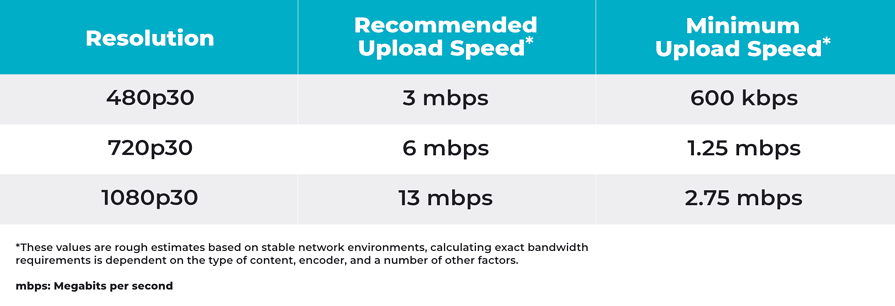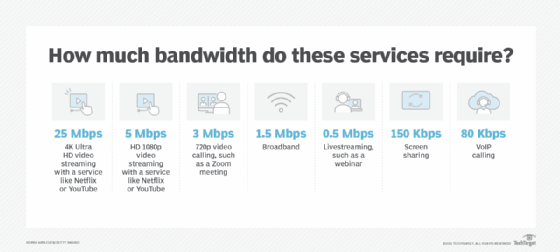A Comprehensive Guide to Measuring Megabits Per Second for Home Use
Wiki Article
How Megabits Per Second Influence Your Online Activities
The principle of megabits per second (Mbps) plays a crucial role in forming our online experiences. Greater Mbps can enhance efficiency and lower interruptions, while insufficient rates may promote aggravation and ineffectiveness.Recognizing Megabits Per Second
When taking into consideration internet rate, it's necessary to recognize the concept of megabits per second (Mbps), which works as a typical dimension for information transfer prices. This metric measures just how much information can be sent over a net connection in one second, providing a clear understanding of efficiency abilities - Megabits Per Second. For context, one megabit amounts to one million bits, and Mbps is generally made use of to reveal transmission capacity for various online activitiesA greater Mbps indicates a quicker internet connection, enabling customers to do tasks such as downloading and install documents, surfing web sites, and taking part in online gaming a lot more successfully. As an example, normal surfing calls for around 1-5 Mbps, while streaming high-definition video may demand 5-25 Mbps. Recognizing these needs is essential for establishing the ideal internet speed needed for particular activities.
Furthermore, the number of gadgets linked to a network can affect general efficiency. Several individuals streaming, video gaming, or downloading and install all at once can stress readily available transmission capacity, causing slower rates - Megabits Per Second. Assessing personal online practices and demands is important in choosing an internet plan that aligns with one's demands, making certain a smooth electronic experience
Streaming and Buffering Issues
Streaming high-definition material has become a staple of modern-day on-line amusement, yet it is usually come with by irritating buffering problems. These interruptions can significantly diminish the watching experience, causing discontentment and potential loss of target market interaction. Buffering happens when the data sent from the streaming service is not received promptly enough to maintain a smooth playback, usually because of insufficient net speed measured in megabits per second (Mbps)
Furthermore, real-time streaming can be affected by network congestion, which takes place when numerous gadgets share the same bandwidth. As a result, enhancing connection speed and ensuring ample Mbps is crucial for a smooth streaming experience. As streaming services proceed to progress, comprehending the impact of Mbps on buffering concerns stays crucial for customers seeking uninterrupted amusement.
Online Gaming Efficiency
The effect of net speed on online tasks extends past streaming, significantly affecting on the internet pc gaming performance. In affordable video gaming, reduced latency and high data transfer are crucial for a seamless experience. A rapid connection decreases lag, enabling gamers to react promptly to in-game events, which can be the difference in between success and loss.Data transfer, gauged in megabits per second (Mbps), plays a crucial role in sustaining numerous gadgets and pc gaming platforms concurrently. Insufficient data transfer can bring about dropped links or decreased video game quality, negatively influencing gameplay. For instance, on the internet multiplayer video games require considerable information transfer, especially throughout peak gaming hours when countless go to website players are online.
Fast-paced first-person shooters demand greater rates to maintain responsiveness, while turn-based strategy video games might work reasonably well on lower rates. As on the internet gaming continues to advance, with boosting graphical fidelity and even more complicated multiplayer environments, the need for greater Mbps will only magnify.
Video Clip Conferencing Top Quality
In today's digital landscape, video clip conferencing top quality is heavily affected by web speed, specifically in terms of bandwidth and latency. Top quality video clip calls need sufficient transmission capacity to transfer sound and video data effortlessly. Usually, a minimum of 1.5 Mbps upload and download speeds is advised for conventional definition video clip, while high-definition video clip conferencing generally requires a minimum of 3 Mbps.Latency, or the hold-up between sending out and receiving information, also plays a vital duty in the individual experience. Reduced latency guarantees that discussions flow normally without unpleasant stops briefly or disturbances. Ideally, latency must be below 150 milliseconds for reliable communication. Higher latency can bring about echo, lag, and disjointed communications, which can prevent collaboration and involvement during meetings.
Furthermore, numerous participants in a video clip conference can strain readily available bandwidth, requiring even greater rates. Network blockage, frequently triggered by synchronised tasks like streaming or downloading, can better degrade video quality. Therefore, for organizations relying upon video pop over to these guys clip conferencing for remote cooperation, understanding the relationship between megabits per second and general communication quality is vital for preserving efficiency and improving online communications.
Selecting the Right Web Plan
Choosing a suitable web plan is important for making certain optimum efficiency in different on the internet activities, especially in settings that demand high transmission capacity, such as video clip conferencing and online pc gaming. Megabits Per Second. When thinking about a web plan, it is important to evaluate both the speed and information allocation to match your particular usage needsFor houses with numerous individuals engaging in synchronised tasks, a plan offering greater megabits per second (Mbps) is recommended. Generally, a minimum of 25 Mbps appropriates for typical streaming and surfing, while plans exceeding 100 Mbps are better for even more intensive jobs. Furthermore, consider the nature of your online tasks; video conferencing requires a minimum of 1.5 Mbps submit speed, while on the internet video gaming might require a lower latency yet constant link.
It is additionally important to evaluate your information cap. Unrestricted data strategies can avoid strangling and disruptions, specifically if heavy use is expected. Lastly, research study company in your area, as accessibility and pricing can differ. By thoughtfully choosing a net plan customized to your needs, you can improve your look at this now online experience, making certain smooth, continuous accessibility to your preferred activities.
Conclusion
In conclusion, the value of megabits per second (Mbps) in forming on the internet activities can not be overemphasized. A complete understanding of individual or house Mbps demands is important for picking a proper internet strategy that properly sustains diverse online tasks and individual needs.

Normally, a minimum of 25 Mbps is appropriate for common streaming and browsing, while plans exceeding 100 Mbps are better for even more extensive tasks. Additionally, take into consideration the nature of your online tasks; video conferencing requires at least 1.5 Mbps post rate, while on the internet video gaming may require a reduced latency but consistent link.
Report this wiki page